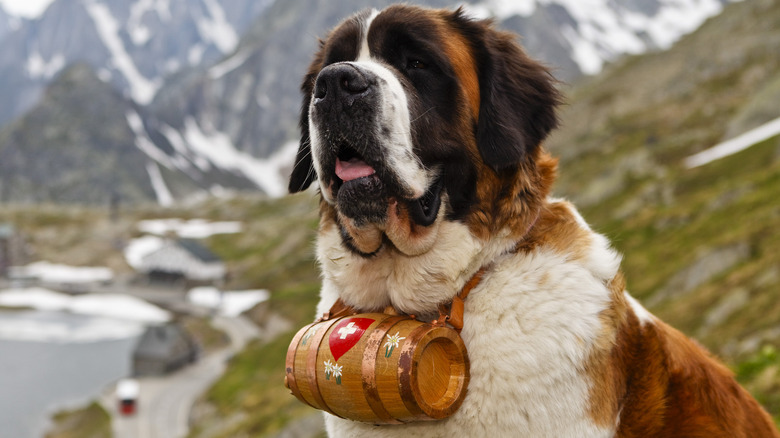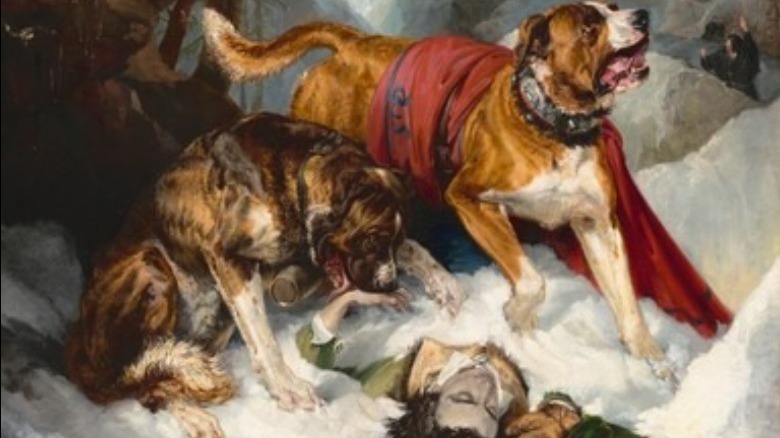Do St. Bernard Dogs Really Wear Barrels Around Their Necks?
When you think of St. Bernards, a few things probably come to mind. You might think of snowy mountains, or dogs curled up by a fireplace. Maybe you think of the old "Beethoven" movies and TV series. And, of course, you'll remember that little wooden barrel hanging around the dog's neck on a collar.
St. Bernards used to look very different from how they do now, with shorter fur that fared better in the snow (via Smithsonian). They were excellent at surviving in the snow and could sniff out lost travelers with ease, according to Mental Floss, which made them ideal for rescuing people in wintery mountain passes. But where did those barrels come from? Do St. Bernards actually wear them? Did they ever?
The short answer is no. St. Bernards don't wear barrels on their necks for any practical purposes, at least not outside of paintings and photoshoots, according to Mental Floss. But it is true that they were bred and raised primarily to rescue people in snowy mountains (via Mental Floss).
Where did the idea of the barrel come from?
The St. Bernards were an important part of life and work in the Great St. Bernard Pass, which sits on the border of Italy and Switzerland (via Mental Floss). They've been a part of the culture since sometime between the 17th and 18th centuries, Mental Floss says, when the pass was home to a hospice center staffed by monks. The monks themselves often ventured forth to rescue stranded travelers caught in the harsh weather conditions of the pass, aided by the special breed of dog, says Smithsonian.
The barrel around the neck came later. In 1820 a young painter named Edwin Landseer created a piece (above) that showed two of the dogs saving a traveler in the pass. The image shows one of the St. Bernards wearing a barrel around its neck, and according to Mental Floss, Landseer said the barrel contained brandy. That painting, "Alpine Mastiffs Reanimating a Distressed Traveler," is one source of the enduring legend.
St. Bernards haven't been used for snow rescues since the 1950s, according to Smithsonian. But the image of the dogs with barrels around their necks, running through the snow, has stuck around.

